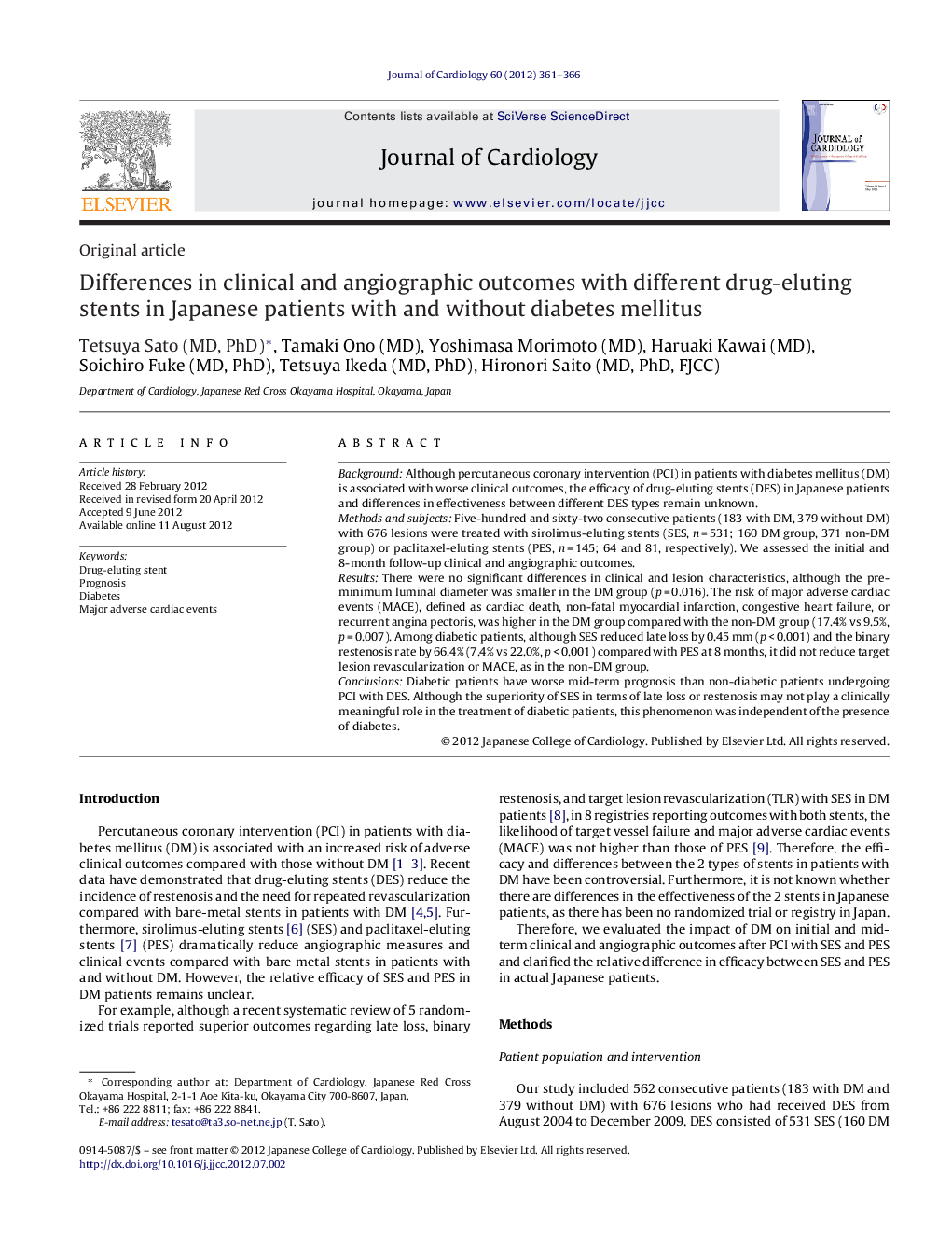| Article ID | Journal | Published Year | Pages | File Type |
|---|---|---|---|---|
| 2963184 | Journal of Cardiology | 2012 | 6 Pages |
BackgroundAlthough percutaneous coronary intervention (PCI) in patients with diabetes mellitus (DM) is associated with worse clinical outcomes, the efficacy of drug-eluting stents (DES) in Japanese patients and differences in effectiveness between different DES types remain unknown.Methods and subjectsFive-hundred and sixty-two consecutive patients (183 with DM, 379 without DM) with 676 lesions were treated with sirolimus-eluting stents (SES, n = 531; 160 DM group, 371 non-DM group) or paclitaxel-eluting stents (PES, n = 145; 64 and 81, respectively). We assessed the initial and 8-month follow-up clinical and angiographic outcomes.ResultsThere were no significant differences in clinical and lesion characteristics, although the pre-minimum luminal diameter was smaller in the DM group (p = 0.016). The risk of major adverse cardiac events (MACE), defined as cardiac death, non-fatal myocardial infarction, congestive heart failure, or recurrent angina pectoris, was higher in the DM group compared with the non-DM group (17.4% vs 9.5%, p = 0.007). Among diabetic patients, although SES reduced late loss by 0.45 mm (p < 0.001) and the binary restenosis rate by 66.4% (7.4% vs 22.0%, p < 0.001) compared with PES at 8 months, it did not reduce target lesion revascularization or MACE, as in the non-DM group.ConclusionsDiabetic patients have worse mid-term prognosis than non-diabetic patients undergoing PCI with DES. Although the superiority of SES in terms of late loss or restenosis may not play a clinically meaningful role in the treatment of diabetic patients, this phenomenon was independent of the presence of diabetes.
